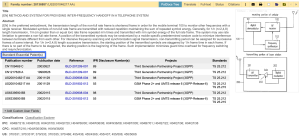Your Guide to Understanding Standard Essential Patents
In today’s digitally interconnected world, where technology plays a central role in almost every aspect of our lives, the concept of Standard Essential Patents (SEPs) is crucial. Whether it’s the way our devices communicate with each other, the protocols they follow, or the methods they use to ensure compatibility, SEPs form the backbone of modern technology. In this guide, we will explain what Standard Essential Patents are, their significance, and how they impact various stakeholders in the technology ecosystem.
What Are Standard Essential Patents?
Standard Essential Patents, commonly known as SEPs, protect technologies that are deemed essential for implementing a particular technical standard. But what exactly is a technical standard? A technical standard is an agreed-upon description of a technology or protocol that ensures interoperability – the ability of devices or software to communicate and work seamlessly with each other.
Imagine the vast array of devices we use daily, from smartphones to smart home gadgets. For these devices to function properly and interact with each other, they must adhere to certain technical standards. These standards dictate the specifications and protocols necessary for interoperability. Now, if a patented technology is considered indispensable for implementing such a standard, it becomes classified as a Standard Essential Patent.
One critical aspect of Standard Essential Patents is the obligation of the patent holders to license them under Fair, Reasonable, and Non-Discriminatory (FRAND) terms and conditions. This ensures that essential technologies are accessible to all parties involved in implementing the standard, fostering fair competition and innovation.
What is an Example of a Standard Essential Patent?
A quintessential example of the importance of technical standards and SEPs lies in the realm of mobile phones. Think about the various technologies integrated into a smartphone – from 5G connectivity to Wi-Fi capabilities. These technologies are essential for ensuring that mobile devices can communicate with cellular networks and other devices seamlessly. By adhering to established standards and licensing SEPs, manufacturers ensure that their products are compatible with diverse networks and systems, ultimately benefiting consumers.
 What Are the Benefits of Standard Essential Patents?
What Are the Benefits of Standard Essential Patents?
The implementation of Standard Essential Patents brings about a multitude of benefits, ranging from fostering innovation to ensuring fair competition and enhancing user experience.
ROI for Research and Development Organisations
For Research and Development-intensive organisations, such as companies, universities, and public research institutions, fair compensation for their innovations is paramount. These entities invest significant resources in researching and developing cutting-edge technologies, and the ability to license their intellectual property through SEPs ensures a fair return on investment. This incentivises continued innovation and offsets the high costs associated with technological advancements.
Fair Treatment for Hardware Manufacturers
Hardware manufacturers play a crucial role in implementing open standards, but they must have assurances regarding access to essential technologies. SEPs ensure that manufacturers are not subjected to arbitrary restrictions or discriminatory pricing when incorporating patented technologies into their products. This fosters a level playing field and promotes fair competition within the industry.
A Better Experience for End Users
At the end of the day, the ultimate beneficiaries of SEPs are the end users. By adhering to established standards and licensing essential technologies, manufacturers ensure that their products offer enhanced features and compatibility. Whether it is accessing high-speed internet through 5G or seamlessly connecting to wireless networks, standardised technologies enrich the user experience. Additionally, the sharing of technological innovations through SEPs prevents monopolies and promotes diversity in the market, offering consumers a range of options at various price points.
How Technical Standards Are Created
The creation of technical standards is a collaborative process involving various stakeholders, primarily Standard Development Organisations (SDOs). These organisations bring together industry experts, technical specialists, and other relevant parties to develop standards that are fair, comprehensive, and inclusive. Additionally, trade bodies, government organisations, and similar entities may also contribute to the standardisation process. The overarching goal is to create standards that promote interoperability, innovation, and fairness across the industry.
Conclusion
In conclusion, Standard Essential Patents play a pivotal role in shaping the technological landscape, fostering innovation, promoting fair competition, and enhancing user experience. By understanding the significance of SEPs and embracing standardised technologies, stakeholders across the technology ecosystem can drive positive outcomes and pave the way for a more interconnected and innovative future.
Influence Your IP Strategy with Powerful Patent Insights
When navigating the complex landscape of intellectual property (IP), access to comprehensive data and insights is crucial. Minesoft has powerful patent search tools, including PatBase, designed to empower organisations in formulating effective IP strategies. By leveraging these tools, businesses can gain valuable patent insights, identify emerging trends, and make informed decisions to stay ahead in today’s competitive market.
To experience the benefits first-hand, contact the Minesoft team today to request a demo and improve your IP Strategy search process. Unlock the potential of your intellectual property with Minesoft’s innovative solutions.
FAQs
1. What are some examples of disputes or challenges surrounding the licensing of Standard Essential Patents (SEPs), and how are they typically resolved?
Disputes over the licensing of Standard Essential Patents (SEPs) often arise when patent holders and implementers disagree on what constitutes fair, reasonable, and non-discriminatory (FRAND) terms. These disputes can involve issues such as the calculation of royalty rates, the scope of licensing, and the enforcement of injunctions. Resolution typically involves negotiation, mediation, or litigation, with courts or arbitration bodies often tasked with adjudicating these disputes.
2. Are there any specific regulations or governing bodies that oversee the fair, reasonable, and non-discriminatory (FRAND) licensing terms for SEPs, and how do they ensure compliance?
Regulation of fair, reasonable, and non-discriminatory (FRAND) licensing terms for Standard Essential Patents (SEPs) varies by jurisdiction. While there may not be specific regulatory bodies dedicated solely to overseeing FRAND terms, competition authorities and patent offices often play a role in promoting compliance. Additionally, industry standards bodies may establish guidelines or policies to encourage fair licensing practices among members.
3. How do industries or companies decide which technologies to include in technical standards, and how often are these standards updated to accommodate innovations and advancements in technology?
The process of deciding which technologies to include in technical standards involves collaboration among various stakeholders, including industry experts, standard development organisations (SDOs), and sometimes government agencies. These stakeholders work together to identify technologies that are essential for interoperability and agree upon specifications and protocols. Standards are typically updated periodically to accommodate new innovations and address emerging challenges, with revisions driven by advancements in technology, changes in market demand, and feedback from stakeholders.


